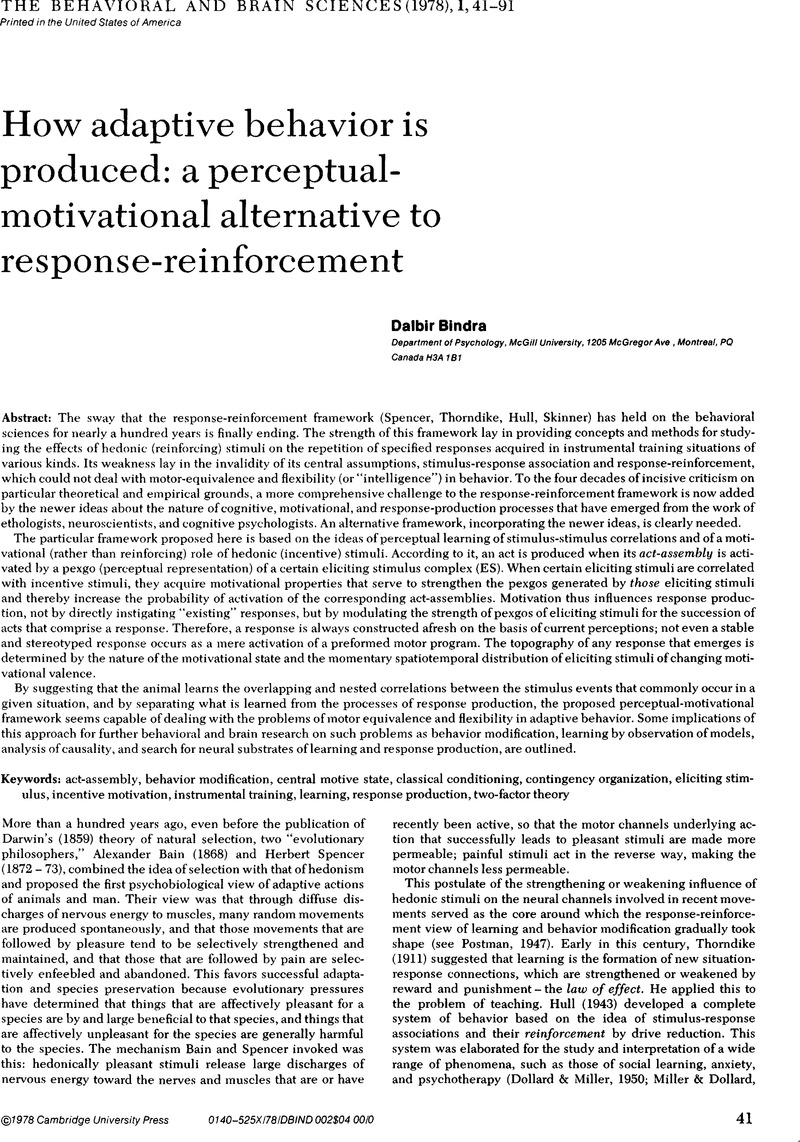No CrossRef data available.
Article contents
Bindra's theory from the perspective of human motivation: unit size, stimulus centering, and the value of neural theory
Published online by Cambridge University Press: 04 February 2010
Abstract
An abstract is not available for this content so a preview has been provided. Please use the Get access link above for information on how to access this content.

Information
- Type
- Open Peer Commentary
- Information
- Copyright
- Copyright © Cambridge University Press 1978
References
REFERENCES
Atkinson, J. W., An introduction to motivation. Princeton, N.J., D. Van Nostrand Co. 1964.Google Scholar
McClelland, D. C, Atkinson, J. W., Clark, R. A., and Lowell, E. L., The achievement motive. N.Y., Appleton-Century-Crofts, 1953.CrossRefGoogle Scholar
Ryan, T. A.Intentional Behavior: An Approach to Human Motivation. Ronald Press Co., New York, 1970.Google Scholar
Weiner, B.Theories of motivation: From mechanism to cognition. Chicago, Markham Publishing Co., 1972.Google Scholar

